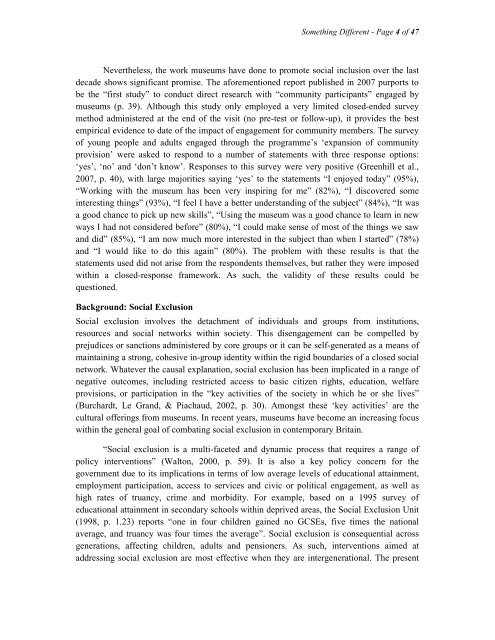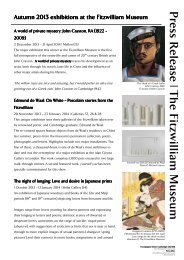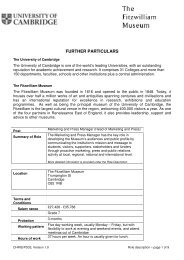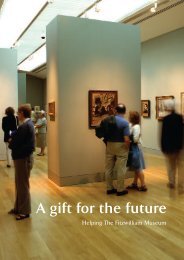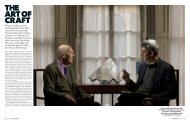Something Different: A pilot study evaluating family outreach ...
Something Different: A pilot study evaluating family outreach ...
Something Different: A pilot study evaluating family outreach ...
Create successful ePaper yourself
Turn your PDF publications into a flip-book with our unique Google optimized e-Paper software.
<strong>Something</strong> <strong>Different</strong> - Page 4 of 47<br />
Nevertheless, the work museums have done to promote social inclusion over the last<br />
decade shows significant promise. The aforementioned report published in 2007 purports to<br />
be the “first <strong>study</strong>” to conduct direct research with “community participants” engaged by<br />
museums (p. 39). Although this <strong>study</strong> only employed a very limited closed-ended survey<br />
method administered at the end of the visit (no pre-test or follow-up), it provides the best<br />
empirical evidence to date of the impact of engagement for community members. The survey<br />
of young people and adults engaged through the programme’s ‘expansion of community<br />
provision’ were asked to respond to a number of statements with three response options:<br />
‘yes’, ‘no’ and ‘don’t know’. Responses to this survey were very positive (Greenhill et al.,<br />
2007, p. 40), with large majorities saying ‘yes’ to the statements “I enjoyed today” (95%),<br />
“Working with the museum has been very inspiring for me” (82%), “I discovered some<br />
interesting things” (93%), “I feel I have a better understanding of the subject” (84%), “It was<br />
a good chance to pick up new skills”, “Using the museum was a good chance to learn in new<br />
ways I had not considered before” (80%), “I could make sense of most of the things we saw<br />
and did” (85%), “I am now much more interested in the subject than when I started” (78%)<br />
and “I would like to do this again” (80%). The problem with these results is that the<br />
statements used did not arise from the respondents themselves, but rather they were imposed<br />
within a closed-response framework. As such, the validity of these results could be<br />
questioned.<br />
Background: Social Exclusion<br />
Social exclusion involves the detachment of individuals and groups from institutions,<br />
resources and social networks within society. This disengagement can be compelled by<br />
prejudices or sanctions administered by core groups or it can be self-generated as a means of<br />
maintaining a strong, cohesive in-group identity within the rigid boundaries of a closed social<br />
network. Whatever the causal explanation, social exclusion has been implicated in a range of<br />
negative outcomes, including restricted access to basic citizen rights, education, welfare<br />
provisions, or participation in the “key activities of the society in which he or she lives”<br />
(Burchardt, Le Grand, & Piachaud, 2002, p. 30). Amongst these ‘key activities’ are the<br />
cultural offerings from museums. In recent years, museums have become an increasing focus<br />
within the general goal of combating social exclusion in contemporary Britain.<br />
“Social exclusion is a multi-faceted and dynamic process that requires a range of<br />
policy interventions” (Walton, 2000, p. 59). It is also a key policy concern for the<br />
government due to its implications in terms of low average levels of educational attainment,<br />
employment participation, access to services and civic or political engagement, as well as<br />
high rates of truancy, crime and morbidity. For example, based on a 1995 survey of<br />
educational attainment in secondary schools within deprived areas, the Social Exclusion Unit<br />
(1998, p. 1.23) reports “one in four children gained no GCSEs, five times the national<br />
average, and truancy was four times the average”. Social exclusion is consequential across<br />
generations, affecting children, adults and pensioners. As such, interventions aimed at<br />
addressing social exclusion are most effective when they are intergenerational. The present


